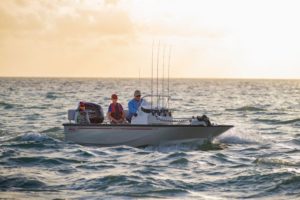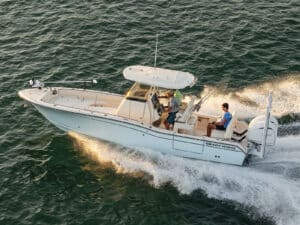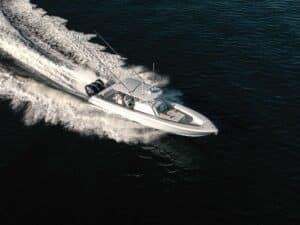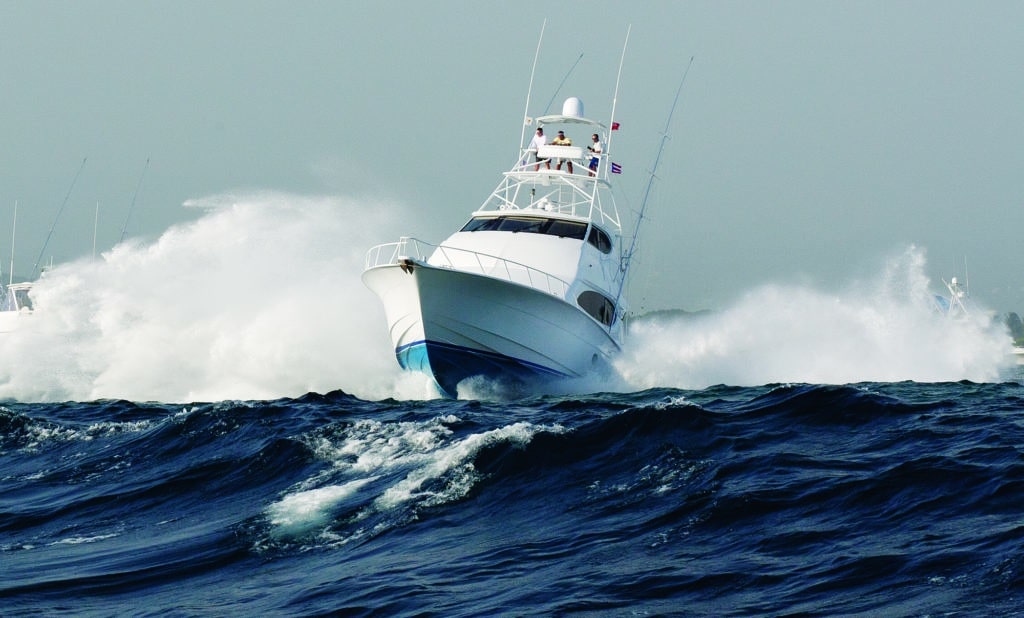
Running Dangerous Inlets
From the shifting Outer Banks of North Carolina to the tempestuous coast of the Pacific Northwest, boating anglers regularly face dangerous inlets and passes. Entrances such as those at Florida’s Boynton and St. Lucie inlets, Oregon’s Columbia River bar, California’s Golden Gate, and North Carolina’s Oregon Inlet host some of the world’s nastiest conditions.
A combination of factors can result in rough inlets, says Bill Cordes, director of sales and marketing for Opa Locka, Florida-based Invincible Boats. Cordes has run dangerous inlets all of his adult life, and witnessed breakers so tall you couldn’t see over the top.
“A powerful outgoing tide streaming through a narrow channel and a strong onshore wind tend to pile up steep seas,” Cordes explains. “Combine these two factors with shoaling, and you have big, breaking waves at the inlet, resulting in very dangerous conditions.”
Cordes and others offer the following tips for staying safe when navigating an inlet, with special advice for running passes that are new to you.
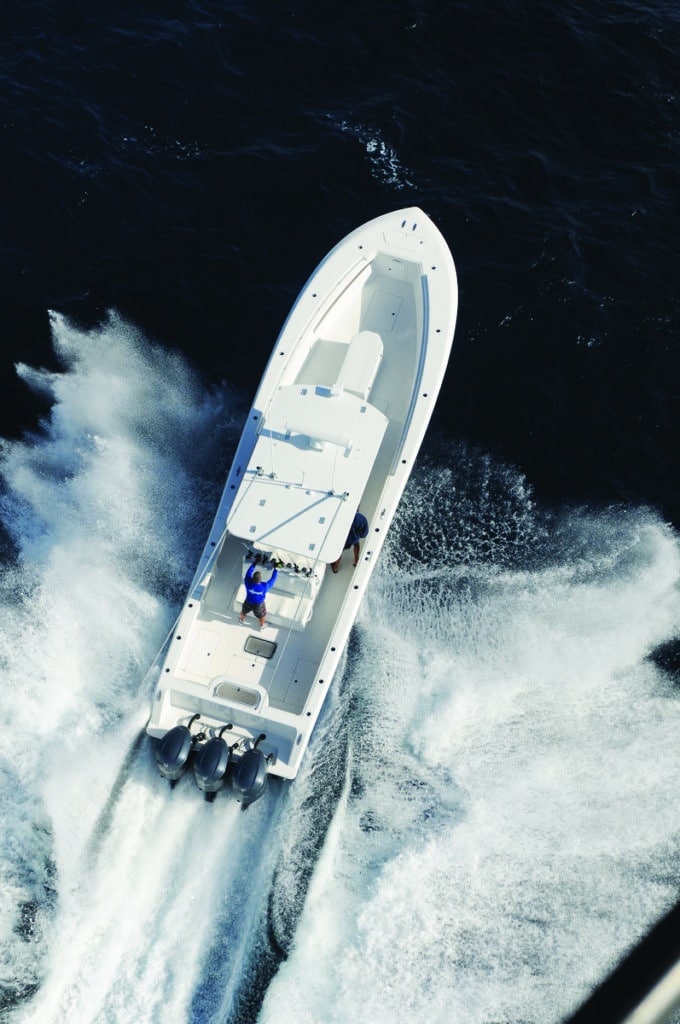
Over the Bar
1. Ask a Local
If you don’t know the inlet, ask local captains in advance for advice, says Cordes. “Reaching out to a local charter captain or commercial fisherman is a good idea,” he explains. “It’s entirely OK to ask if you can follow them out, as they know the best line through the entrance, which can change often from shifting sandbars.” You might even hire a guide with a strong knowledge of the inlet to show you the way, Cordes suggests. In either case, use your chart plotter to record the track taken through the inlet so you can retrace the path a day or two later. Keep in mind, however, that the safest course through an inlet can change. Don’t assume that the track you use today will still be safe a month from now.
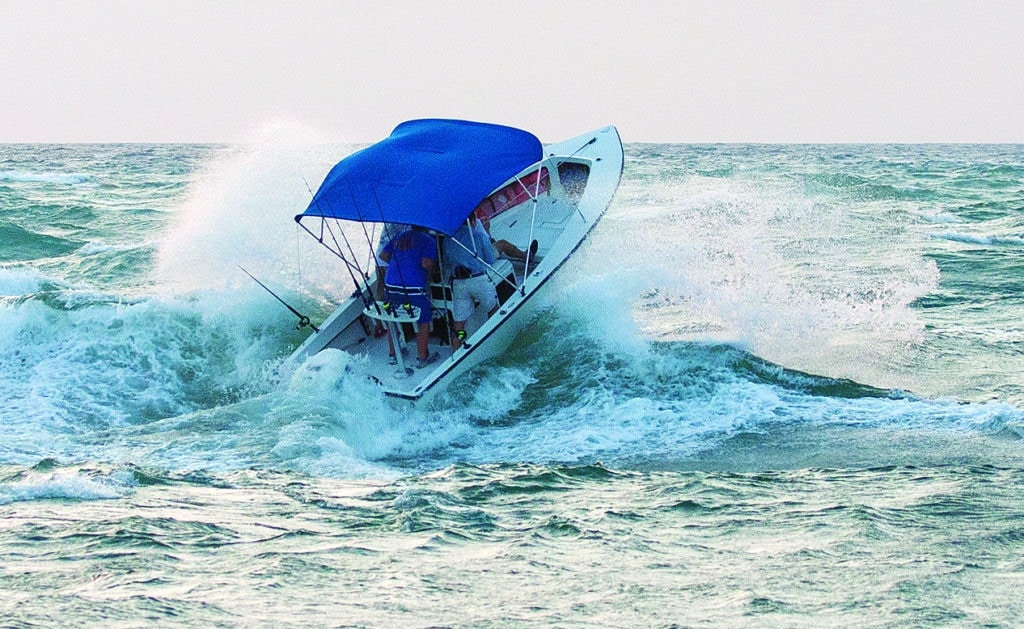
Watch the Waves
2. Study the Inlet
Stay posted on the latest weather conditions and tides, not only for your departure time, but also for your return, as knowing when to cross is just as important as knowing where to cross. “A strong outgoing tide is always cause for concern,” says Chad Normoyle, a Shimano/G.Loomis pro staffer who often crosses the infamously dangerous Columbia River bar to fish for albacore off Oregon and Washington. “You might get out OK, but if you time the return poorly, your boat’s safety might be in jeopardy.”
3. Don’t Rush
Whether heading out or in a nasty inlet, take time to study it before making your run, especially if you are unfamiliar with the bar, says Todd Leggett, dealer/customer relations manager for Grady-White Boats in Greenville, North Carolina. He suggests studying the cycles of waves at the bar; there’s a rhythm to them. “You want to cross when the waves are smaller,” he advises. You can also check out the inlet the day before, perhaps making a trial run in and out, laying down a track on your chart plotter to record the best line over the bar.
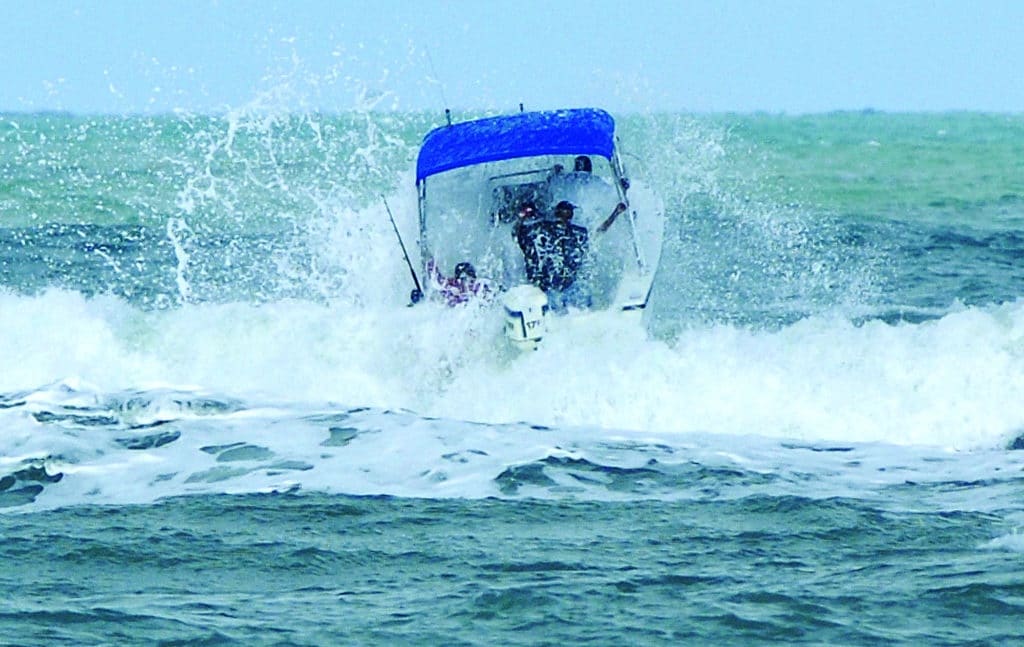
Make Sure You Have the Right Boat
4. Have the Right Boat
Make sure your boat has sufficient size, buoyancy and seakeeping ability, Cordes advises. “The last thing you want is a boat that doesn’t track well in a following sea, or tends to stuff the bow into a head sea, or is overwhelmed by the waves,” he says. The boat should also ride relatively level at low speeds. “If the boat has a lot of bow rise, it’s difficult to see the waves, buoys, jetties and other objects in front of you, impairing your ability to navigate the inlet safely,” Cordes says. “Know the capabilities and limitations of your boat.”
5. Run It Wisely
Look for the area of the bar or inlet that has the smallest waves. This is usually the area with the deepest water. When returning in a big following sea, keep the boat straight and on the backside of a wave, experts suggest. Match the wave’s speed, trying to stay midway between the crest behind you and the one ahead. Avoid overtaking the wave and surfing down its face, as this can lead to catastrophic pitchpoling (flipping stern over bow) or broaching (capsizing as the boat turns sideways toward a breaking wave). By the same token, apply enough power to keep ahead of the wave astern and prevent it from overtaking you. Adjust your throttles to stay in the trough until you have passed the danger zone.
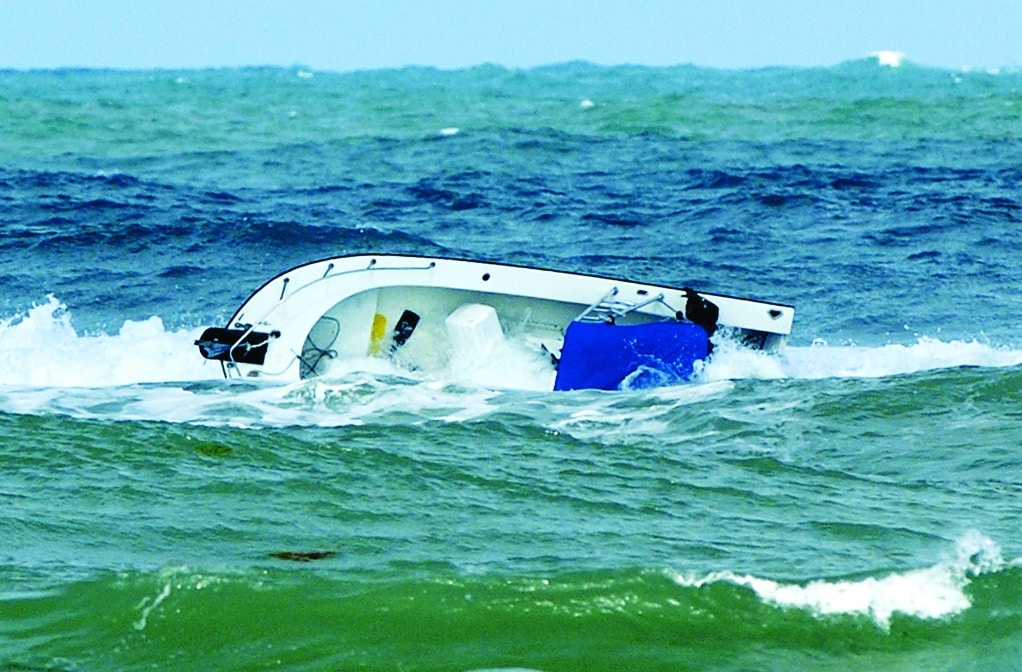
A Nasty Inlet Can Ruin Your Day
6. Have Plenty of Power
Safely running a dangerous inlet requires that you have immediate reserve power to maneuver out of harm’s way. “You might not always need the extra power, but having extra horsepower relative to your boat size can help keep you safe,” says Cordes. For example, when trying to stay ahead of a breaking wave, a punch of the throttle keeps you in position. Few things are more dreadful than having an underpowered boat in a nasty inlet, whether trying to climb up the face of a wave or hoping to outrun it.
7. Don’t Go at Night
Running a rough inlet proves exponentially more difficult and dangerous when you can’t see. “A lot of guys like to head offshore before daylight to fish for tuna, and that means crossing the bar in the dark,” says Normoyle. “Every year there are accidents as a result.” So Normoyle’s advice is to wait until daylight to head out, and to return early enough to cross back over before sundown. The same advice applies when there’s heavy fog or torrential rain.
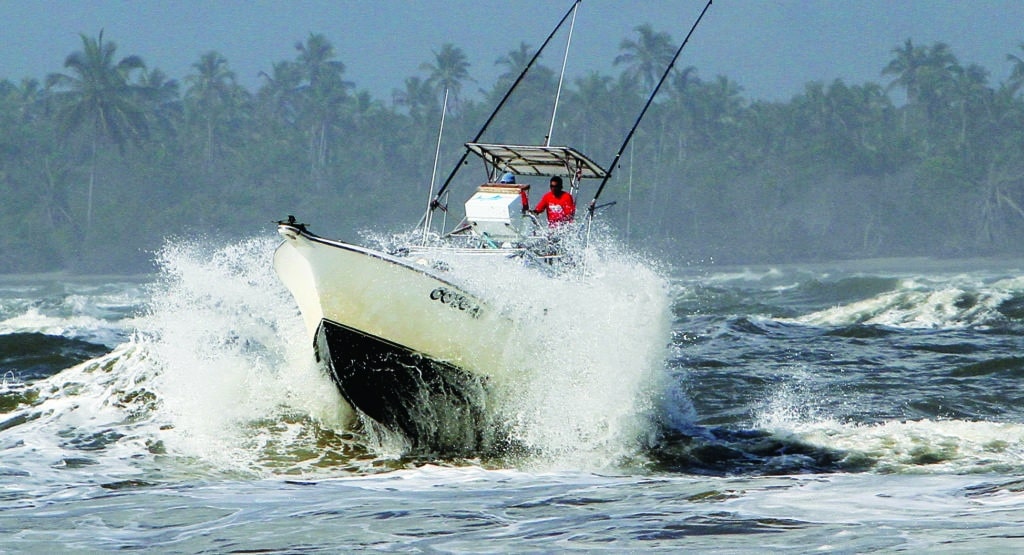
Powering Through the Waves
8. Wait It Out
Sometimes, waiting just a few hours for a slack tide can make the difference between a calm pass and dangerous one. “Even though the wind might be blowing, the lack of an outgoing tide can render the inlet more manageable,” Cordes points out. So if the inlet is too rough, consider waiting out the tides, whether you’re heading out in the morning or coming back in the afternoon. Another option is to chart a course or trailer your boat to another, more friendly location.
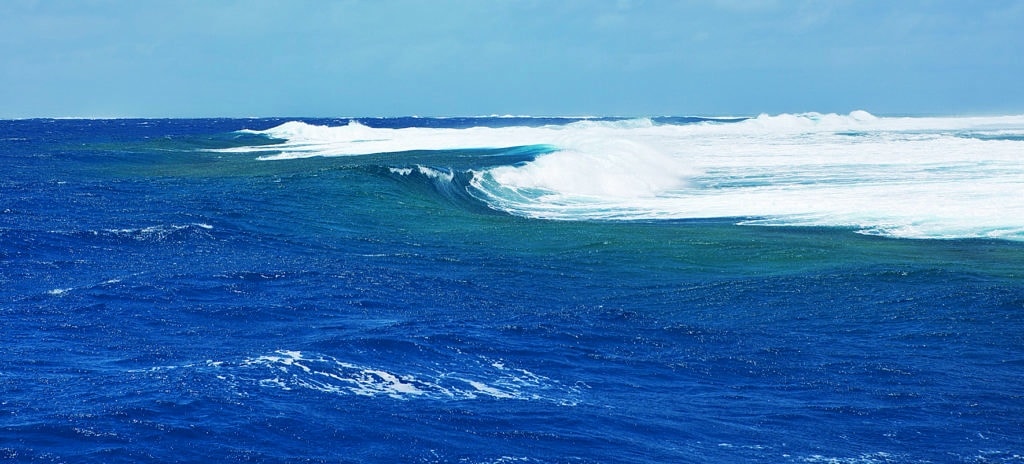
Pick the Calmest Path
9. Wear Life Jackets
No matter what the conditions, if they’re not already doing so, instruct your crew to don life jackets when running a dangerous inlet. “It’s always a good idea to ask them to stay seated with their life jackets on,” says Cordes. Get all crew members out of the cabin or other enclosure, as the buoyancy of their life jackets might prevent escape should the boat capsize. If, as the helmsman, you must remain in an enclosed space, such as a pilothouse, wear a manually inflatable life jacket.
10. Wear PLBs
On days when the inlet appears nasty, make sure crew are wearing PLBs (personal locator beacons) on their life jackets. Also, be ready to deploy the EPIRB (emergency position-indicating radio beacon) in an emergency to assist first responders in rescue efforts.

Bar Fight
11. Notify Authorities
Radio the Coast Guard or harbor patrol ahead of time if you are experiencing any kind of engine problems or other issues that might impair your boat’s ability to safely return through the inlet. They might choose to stand by inside the inlet to quickly lend assistance in the event of an emergency.
12. Don’t Go
Some days, when the inlet is raging, you need to let prudence prevail. “Don’t be afraid to err on the side of caution and cancel a trip,” says Cordes. “Your crew might be disappointed, but as the captain, it’s your job to make sure everyone stays safe to fish another day.”

